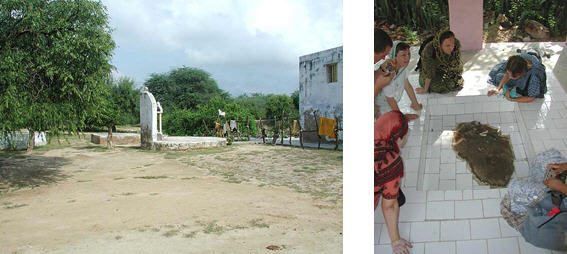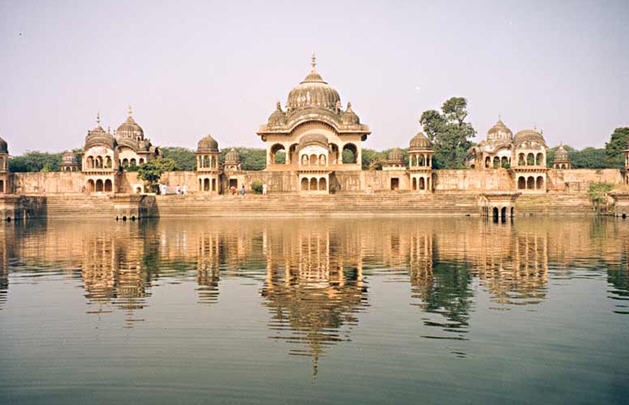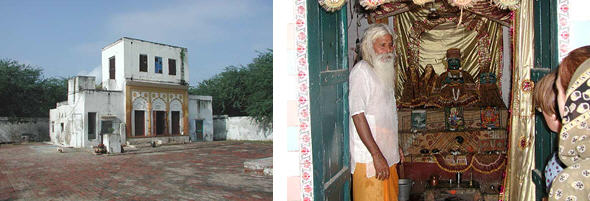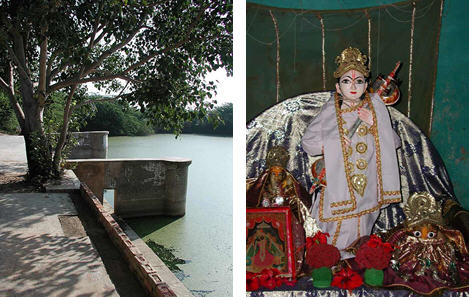
Shyamavan is known as the black forest. At Shyama Kutir (also known as Ratna Simhasana) there is a kunda called Ratna Kunda. This kunda is said to mark the spot where the demon Shankhacuda (Shankhasura) carried off Radharani, who was sitting on the Ratna Simhasana (jeweled throne). It is said that he carried the Ratna Simhasana to Lagamohan Tirtha and left it there, in fear, because Krishna was pursuing him.
Right outside of the entrance to the ashrama, about 7m (20 ft) into the trees, is the imprint of Krishna's left foot. The rock that is embedded into the ground here is painted red where the footprint is located.
Gettin there- This place is in the woods, across from the Sant Nivas Ashrama, about 3 km from Kusuma Sarovara. Sant Nivas Ashrama is the first good sized building that you will see on your left and is a fairly active place. Just before you reach Sant Nivas there is a dirt road (which is the first of two) that goes off into the woods. You walk 120m into the woods and then you make a right turn onto the path that goes to the right. You walk 115m and there is an ashrama and temple directly in front of you. About 7m (20 ft) before the entrance to this ashrama, about 7m (20 ft) into the trees is the imprint of Krishna left foot.
Story of Shankhacuda (Shankhasura) "At that time, while they were so much absorbed, almost in madness, a demon associate of Kuvera (the treasurer of the heavenly planets) appeared on the scene. The demon's name was Shankhasura because on his head there was a valuable jewel resembling a conchshell. Shankhasura though since he belonged to the rich community of Kuvera, he, not Krishna and Balarama, should enjoy the company of so many beautiful girls. He therefore decided to take charge of them. He appeared before Krishna and Balarama and the damsels of Vraja and began to lead the girls away to the north. He commanded them as if he were their proprietor and husband, despite the presence of Krishna and Balarama. Being forcibly taken away by Shankhasura the damsels of Vraja began to call the names of Krishna and Balarama for protection. The two brothers immediately began to follow them, taking up big logs in Their hands. `Don't be afraid, don't be afraid,' They called to the gopis. `We are coming at once to chastise this demon.' Very quickly They reached Shankhasura. Thinking the brothers too powerful, Shankhasura left the company of the gopis and ran for fear of his life. But Krishna would not let him go. He entrusted the gopis to the care of Balarama and followed Shankhasura wherever he fled. Krishna wanted to take the valuable jewel resembling a conchshell from the head of the demon. After following him a very short distance, Krishna caught him, struck his head with His fist and killed him. He then took the valuable jewel and returned. In the presence of all the damsels of Vraja, He presented the valuable jewel to His elder brother Balarama." (Krishna Book, Chap. 34)



